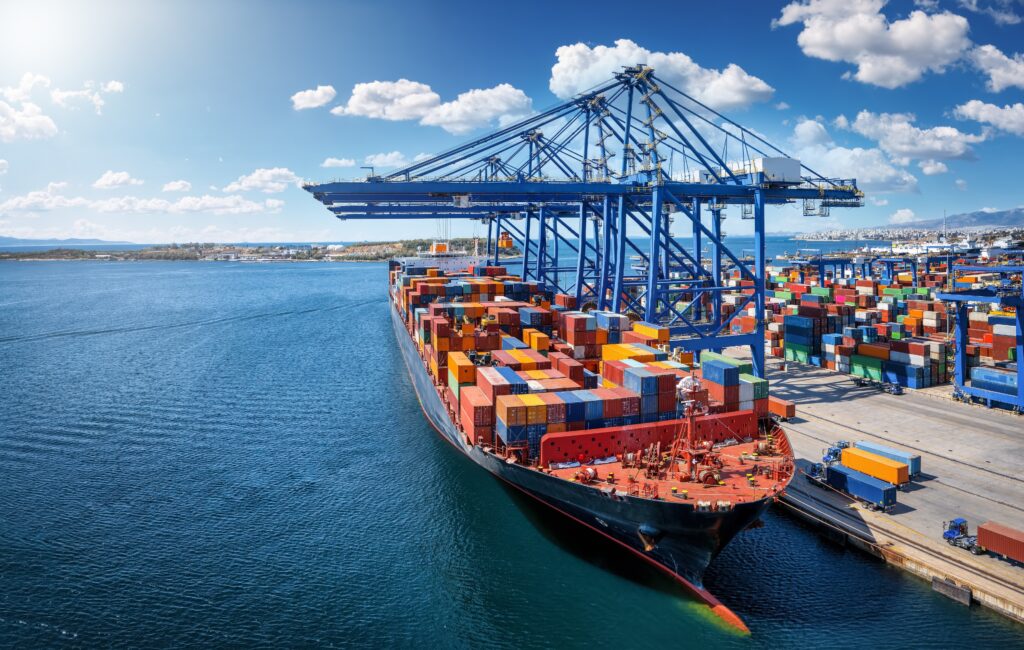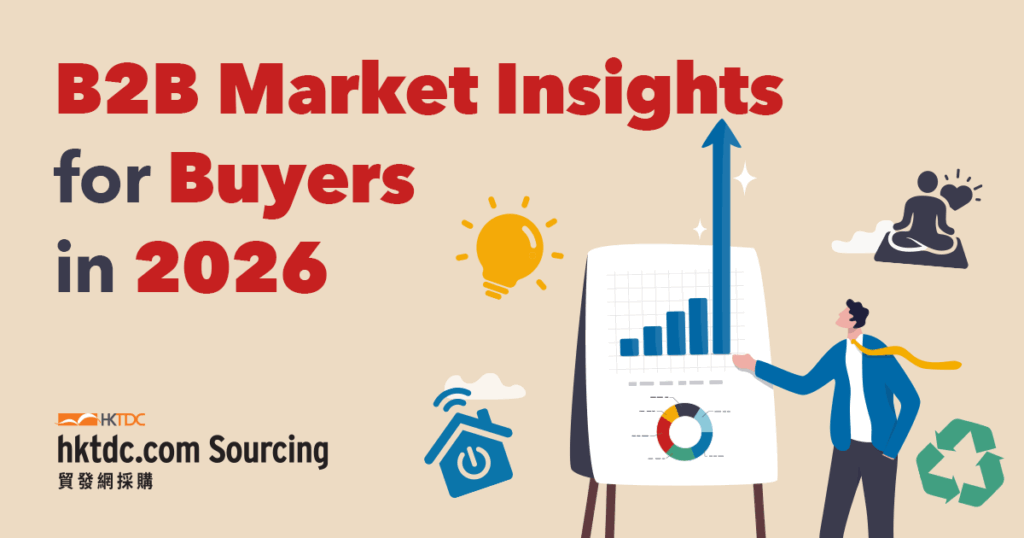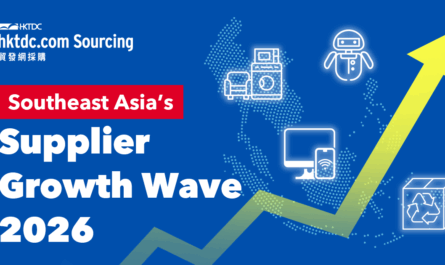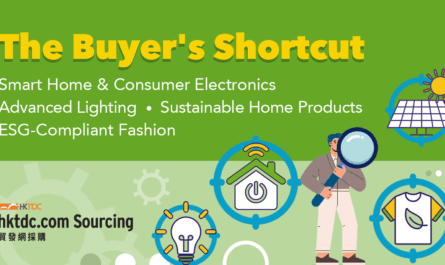Decoding the Pulse of Global Trade
Global supply chains are more interconnected—and competitive—than ever before. Trade flows shift swiftly due to supply chain disruptions, digitalization, and evolving consumer preferences. In the post-pandemic era, procurement managers and sourcing teams face the mounting challenge of tracking global data, recognizing market signals, and acting ahead of trends. Success in 2026 will depend on understanding international trade cycles, identifying growth sectors, and using real-time analytics to maximize ROI, margin, and resilience.
Whether sourcing electronics, green solutions, or trending lifestyle goods, buyers must combine quarterly market intelligence with decisive action to secure pricing, mitigate delays, and build strong supplier networks for the coming year. This article covers the key forces and cycles driving B2B sourcing for 2026, with special attention on Asia-Pacific and the ASEAN bloc—regions that now outperform global averages in export growth, digital trade, and supply chain agility.
Asia and ASEAN in Focus
Asia-Pacific and ASEAN are shaping the global trade landscape for 2026. The ASEAN region, with a collective GDP above $4 trillion, is expanding 25% faster than the global average and stands as the world’s fourth-largest economy. Recent data highlights Vietnam’s stunning 8% Q2 growth, Malaysia’s evolution into a sourcing hub, and new trade agreements paving the way for innovation in manufacturing, cross-border e-commerce, and ESG-compliant goods. As tariffs and uncertainty weigh on other markets, buyers worldwide are realigning supply chains towards Asia, viewing ASEAN as the strategic alternative for sourcing electronics, smart home solutions, and certified green products.
Major digital economy agreements—including the ASEAN Digital Economy Framework (DEFA)¹, set for completion in 2026—plus new bilateral pacts, position the region for strong, sustained growth even as global GDP growth moderates to 3.1–4.3%. Regional integration and digitalization enable buyers to optimize cost, reduce risk, and access future-ready suppliers.
Staying Ahead in Global Sourcing
Maintaining “buyer advantage” means going beyond global trends to understand the cycles defining Asia and ASEAN. Leading procurement teams track shifts in import/export volumes, supply chain disruptions, and regulatory changes, combining demand forecasts with region-specific analytics. Real-time insight is now essential for anticipating surges, diversifying supply, and negotiating early-bird deals in high-growth segments—especially electronics, smart home, and sustainable goods.
Decisions powered by robust data and local intelligence set buyers apart, enabling speed and decisiveness to act quickly and secure the best partnerships in an increasingly dynamic marketplace.

Mapping the Markets: 2025–2026 Trade Timeline and Quarterly Data
The year 2025 marked important inflection points for B2B sourcing, with measurable shifts each quarter. Here’s a breakdown of how these cycles unfolded—and what they mean for buyers looking ahead to 2026.
Q1 2025: Recovery and Restocking
Global imports and exports began the year with a 1.5% overall rise. Asia-Pacific regions, especially China and Vietnam, drove much of this rebound as buyers restocked after end-of-year holiday demand. Electronics, smart home accessories, health-focused homeware, and organizational items led order volumes. Buyers found that Q1 afforded better pricing and supplier availability, particularly for technology and home improvement items that typically surged later in the year.
Q2 2025: Stability and Compliance-Driven Demand
Spring saw trade volumes expand by 2.6%, adding $300 billion to global flows. The ASEAN bloc captured attention as Vietnam, Indonesia, and Malaysia posted double-digit export growth, primarily in consumer electronics and sustainable goods. EU and US buyers raced to source eco-friendly, certified products ahead of changing compliance regulations entering effect mid-year. Health and wellness imports remained strong, but price competition intensified as more suppliers entered the market.
Q3 2025: Holiday Ramp-Up and Logistics Pressure
Q3 brought the expected surge in sourcing for the holiday and back-to-school seasons, but the landscape was complicated by noticeable shifts in demand flows and logistics risk. Global semiconductor sales rose sharply—by 15.8% from Q2 to Q3—driven by robust AI and electronics orders. Asia-Pacific remained a bright spot, with Taiwan and Southeast Asian exporters (especially Vietnam and Thailand) reporting rising shipping volumes to both the US and EU, while China-to-US volumes fell further due to ongoing tariffs. Airfreight rates increased slightly—Asia Pacific up 2%—but overall, shipping costs were more subdued than in 2024, indicating a more moderated peak season. However, supply chain disruptions, particularly for meat, seafood, and copper, spiked; risk events in these segments rose by 189% and nearly 5x, respectively, versus Q3 2024. Buyers who contracted in late Q2 or early Q3 secured better freight rates and inventory, as late buyers saw longer wait times and pricing pressure.
Q4 2025: Tactical Year-End Buying and Future Stocking
As 2025 closed, global trade momentum cooled slightly, with new US/EU tariffs starting to weigh on major trade lanes and more buyers diversifying sourcing away from China. Korea’s Q4 exports remained solid, especially for semiconductors, but other Asian exporters reported mixed results—Japan’s exports to the US fell 33% in October, offset by growth to Southeast Asia and Europe. Airfreight markets stabilized, but rate volatility remained a concern as the Golden Week and holiday spikes hit, compounded by Asia’s typhoon activity and global logistics bottlenecks. Buyers leveraged detailed analytics and platform data to refine products, shipment timing, and negotiations, focusing heavily on robotics, connected devices, and green housewares for early 2026 builds. Early movers were rewarded with better fulfillment and higher visibility to global buyers.
Overall, H1 2025 global imports expanded 4.3% year-over-year, with a $300 billion boost in trade value, but forecasts suggest H2 growth will moderate due to tariff impact and inventory normalization, underscoring the importance of timing and diversification for smart buyers.

Key Sectors to Watch: Data and Forward-Looking Opportunities
Keeping watch on the right sectors is the foundation of a winning sourcing strategy. Quarter-by-quarter data and expert market insights reveal where global demand—and supply chain momentum—are headed for buyers in 2026. Below are the four most promising sectors, each supported by recent market performance and actionable forecasts. Agile buyers who anticipate these shifts will tap into the highest growth and most resilient supply channels as the year unfolds.
1. Electronics
Electronics accounted for $2.7 trillion in 2025 global exports (+3.7% YoY). Asia-Pacific—including China, Vietnam, Malaysia, and South Korea—remains the sector’s powerhouse, with Vietnam alone reporting 12.4% export growth for electronics and tech-enabled home goods. The electronics contract manufacturing (ECM) market is set to reach $582.5 billion in 2025, with a projected CAGR of 10.1%.
2026 Outlook:
Global electronics manufacturing is forecast to exceed $2.3 trillion in 2026, growing at 5–6%. Semiconductor demand will jump 8.5% in 2026 to $761 billion, particularly for memory, logic, and IoT devices. The rise of smart home, wearables, and automation technologies makes electronics a strategic high-margin segment for B2B buyers. Q1 procurement secures competitive pricing before anticipated supply chain pressures resurface.
Plan early to source electronics for 2026—lock in competitive Q1 pricing now.
2. Sustainable Goods
Sustainability is expanding rapidly within B2B sourcing. The global green packaging market reached $295 billion in 2025, and is expected to hit $330 billion by 2027 at 6.5% CAGR. Sustainable electronics are forecast to experience 23% annual growth, reaching $134 billion by 2035.
2026 Outlook:
The Asia-Pacific basin leads supply, especially Indonesia and Vietnam, as regulatory pressure mounts in the EU, US, and China. Buyers can secure better terms and availability by sourcing in Q2, when inventories peak before compliance deadlines. Traceable supply chains, certified bioplastics, and eco-friendly products will dominate negotiations and elevate procurement ROI.
Meet rising demand for eco-friendly products in 2026—connect with sustainable suppliers today.
3. Post-Pandemic Demand Items
Demand for home wellness, hygiene, and improvement products is still 20–25% higher than pre-pandemic benchmarks, with notable Q1 and Q3 spikes across major sales channels.
Top categories include:
- Home fitness tech, wearables, and personal wellness solutions
- Health and hygiene products—air purifiers, UV sanitizers, antibacterial tools, and health-focused kitchen gadgets
- Remote work essentials: ergonomic seating, webcams, digital collaboration kits
2026 Outlook:
Hybrid living, flexible work, and wellness consumption have become the baseline. Buyers locking in early orders for these categories gain the dual benefit of price protection and reliable delivery. Bulk sourcing in Q1/Q2 allows for better stock management as lifestyle shifts remain permanent across regions.
4. Smart Home
The ASEAN smart home sector climbed to $4.15 billion in 2024, and is projected to reach $13.6 billion by 2032 at a robust 16% CAGR. Asia-Pacific’s smart home market is forecast to reach $63 billion in 2025 and $193 billion in 2030.
2026 Outlook:
As households and enterprises demand more interoperability and intelligent features, buyers should source AI-powered and IoT-integrated smart devices from leading ASEAN and China suppliers. Direct engagement and supplier negotiation in Q1/Q2 2026 will be key to unlocking exclusive products and capturing the strongest global demand cycles.

Regional & Global Market Analysis: Landscape, Drivers, and Strategic Actions
These sector trends unfold against a rapidly evolving global trade landscape. To outperform the competition, buyers need actionable insight into market fundamentals, opportunity drivers, and risk factors shaping sourcing in 2026.
Market Landscape
- ASEAN economies (Vietnam, Indonesia, Malaysia, Philippines) are projected to lead regional GDP growth at 4–6% in 2026, outpacing global averages.
- Exports from these economies are expanding fastest in electronics, sustainable goods, and homeware, supported by free trade agreements and supply chain digitalization.
Growth Drivers
- New trade pacts (DEFA, CPTPP2, RCEP3) lower tariffs and boost cross-border procurement, making ASEAN the go-to region for global buyers diversifying beyond China.
- Surge in manufacturing technology investment across Asia-Pacific, with digital platforms streamlining supplier connections and compliance.
- Consumer and regulatory demand for ESG compliance is fueling the rise of certified, eco-friendly product lines and traceable supply chains.
Challenges & Risks
- Ongoing volatility in tariffs, logistics costs, and regulations—especially US/EU policy shifts affecting Chinese-origin supply.
- Global shipping rates remain unpredictable, occasionally spiking during seasonal surges or logistics bottlenecks.
- Labor shortages, logistics delays, and resource competition can impact category timing and availability, making supplier diversity and real-time analytics essential.
Strategic Actions for Buyers
- Source early in Q1/Q2 if you need inventory before Q3 demand peaks, securing pricing locks and priority allocation. Alternatively, source in Q2 and Q4 to capitalize on peak supplier inventory and competitive pricing during clearance periods.
- Use digital B2B sourcing platforms for instant compliance checks, analytics, and broader supplier pools—buyers using these tools report 6–8 days saved per order cycle.
- Build supplier relationships in ASEAN and India to enhance supply chain agility and flexibility. Diversified sourcing across regions helps mitigate trade policy risks, secure favorable contract terms, and gain early access to next-generation, in-demand products.
- Stay proactive—regularly review policy updates, logistics trends, and category growth forecasts to adjust sourcing strategy ahead of shifts.
- Leverage available support programs (government grants, platform incentives, trade association benefits) to enhance digital adoption and expand reach.
Sourcing Insights: Practical Strategies for Buyers
To succeed, modern buyers must use both historical trends and real-time indicators. Data alone isn’t enough—brilliant execution separates winning procurement teams from laggards.
Plan Around Market Cycles
- Pre-order electronics and wellness products ahead of Q3 surges; early procurement can help buyers secure better pricing and avoid peak-season cost spikes.
- Source green-certified products during Q2 inventory peaks for best selection and competitive pricing, as demand and costs typically increase as compliance deadlines approach.
Diversify Supplier Base
- Use multiple suppliers across ASEAN, India, and other regions to avoid overreliance on a single supply source. Diversified sourcing strategies help reduce procurement delays and improve supply chain flexibility.
Leverage Digital Platforms
- Adopt sourcing platforms offering instant compliance checks, supplier validation, and real-time purchasing analytics. B2B buyers report that digital platforms save time and simplify the buying process.
Monitor Trade Policy Shifts
- Stay updated on tariffs, treaties, and logistics cost trends; adjust contracts and delivery schedules based on real-time data and platform alerts.
Prioritize Supplier Communication
- Build relationships for faster turnaround, better after-sales support, and personalized offers. Many top buyers negotiate product videos, certifications, and custom packaging to maximize on-shelf and ecommerce appeal.
Tap Government, Association, and Platform Support
- Check local and global programs for sourcing incentives, digital adoption grants, or export-readiness benefits; these can help cut sourcing costs and expand your supplier portfolio.

Source for Growth in 2026
To succeed in 2026’s rapidly shifting global market, buyers must look beyond cost alone—tapping into diversification, digital tools, and trusted supplier networks to respond to both opportunities and risks. The landscape ahead will reward those who move early to secure next-generation electronics, sustainable products, and smart living solutions, not just as inventory, but as part of a resilient, flexible sourcing strategy.
Buyers who harness real-time market intelligence—tracking policy changes, demand cycles, and emerging sourcing markets—will unlock stronger margins and faster time-to-market. E-procurement platforms, ESG-driven supplier partnerships, and proactive risk management are no longer options; they’re prerequisites for buyers ready to thrive amidst volatility and global competition.
The winners in 2026 will be the businesses that anticipate—not just react to—changing buyer expectations and supply chain realities. Start building your future sourcing edge today: browse quality suppliers, request tailored offers, and connect with partners that can deliver both innovation and assurance, every step of the way.
Bonus for Suppliers
Global buyers are actively sourcing electronics, sustainable goods, wellness products, and smart home solutions from Asia-Pacific suppliers. Showcase your products to procurement teams ready to place orders and diversify their supply chains. Join hktdc.com Sourcing now and connect with buyers seeking reliable partners in 2026’s high-growth markets.
Footnote
- ASEAN Digital Economy Framework Agreement (DEFA): A region-wide pact designed to harmonize digital trade, payments, and data rules across ASEAN, making Southeast Asia a unified digital economy and unlocking cross-border e-commerce and innovation for member countries by 2030.
- CPTPP (Comprehensive and Progressive Agreement for Trans-Pacific Partnership): A free trade agreement between 11 countries (including Vietnam, Malaysia, Singapore, and Brunei from ASEAN) that lowers tariffs, facilitates cross-border commerce, and strengthens trade ties between Asia-Pacific and developed markets like Canada, Australia, and Japan.
- RCEP (Regional Comprehensive Economic Partnership): Asia’s largest free trade agreement, signed in 2020 and effective 2022, covering ASEAN member states plus China, Japan, South Korea, Australia, and New Zealand. RCEP eliminates tariffs on most goods and services, making it a cornerstone for regional trade integration and supply chain resilience.
Global Trade Data, Quarterly Cycles, and Market Forecasts
World Semiconductor Trade Statistics (WSTS), Semiconductor Industry Association (SIA), CargoNet Supply Chain Risk Reports, U.S. Census Bureau, Korea Customs Service, Japan External Trade Organization (JETRO), Statista, Grand View Research, Euromonitor International
Asia-Pacific and ASEAN Economic Trends
ASEAN Secretariat, World Bank, International Monetary Fund (IMF), McKinsey, Frost & Sullivan, HKTDC Research, Vietnam General Statistics Office, Malaysia External Trade Development Corporation (MATRADE)
Sector-Specific Insights: Electronics, Sustainable Goods, Smart Home, and Wellness
IMARC Group, Markets and Markets, Allied Market Research, Mordor Intelligence, Mintel, NielsenIQ, GWI, Deloitte, Gartner
Supply Chain, Logistics, and Risk Management
Freightos, TAC Index, Xeneta, DHL Global Connectedness Report, Everstream Analytics, Resilinc, McKinsey Supply Chain Insights
B2B Sourcing, Digital Platforms, and Buyer Behavior
Industrial Buyer Report 2025, Forrester, Shopify, LinkedIn B2B Institute, OrdersInSeconds, Martal Group, HKTDC International Buyer Sourcing Behaviour Survey 2025
Trade Policy, Agreements, and Compliance
ASEAN Digital Economy Framework Agreement (DEFA), Comprehensive and Progressive Agreement for Trans-Pacific Partnership (CPTPP), Regional Comprehensive Economic Partnership (RCEP), U.S. Trade Representative, European Commission, China Ministry of Commerce (MOFCOM)
Keyword, Trend, and Platform Analytics
Google Trends, Google Ads Keyword Planner, SEMrush, Ahrefs, HKTDC Sourcing, HKTDC NewsBites






